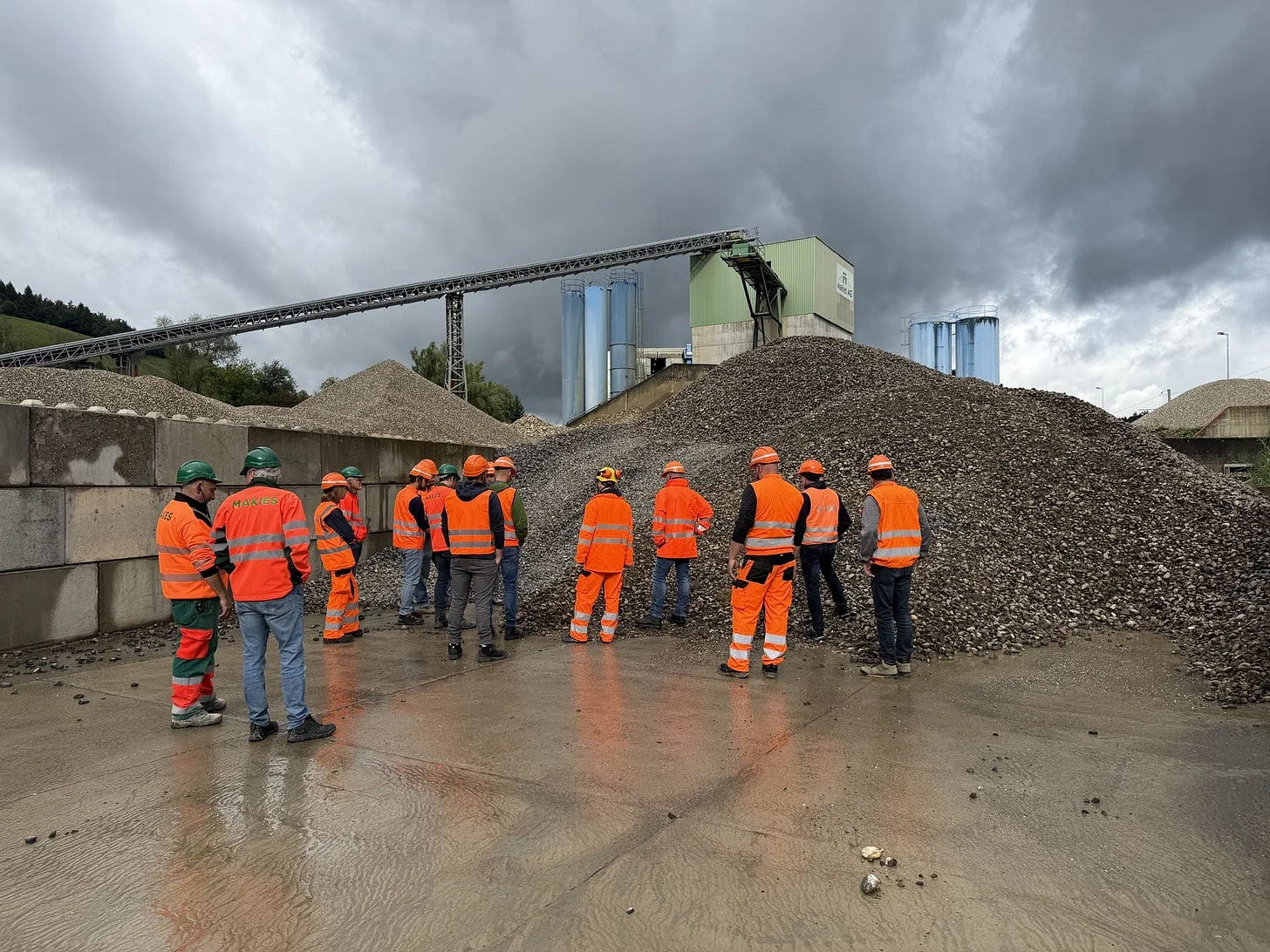No, Europe is not running out of ballast - it’s just getting harder to get hold of
The crushed stone beneath railway tracks rarely makes headlines. Yet securing adequate supplies now requires strategic planning. Swiss operator BLS (Bern-Lötschberg-Simplon railway) exemplifies this shift, turning to large-scale recycling as traditional quarry sources become distant and restricted.
What ballast does
Ballast performs four critical functions. It distributes train weight, maintains track geometry, enables drainage, and absorbs vibration. Without quality ballast, tracks shift and maintenance costs escalate.
European railways consume several million tonnes annually. Each kilometer of double track requires 4,000-10,000 tonnes. Conventional lines need less; high-speed rail more. Local quarries traditionally provided granite, basalt, or limestone meeting railway specifications.
Supply constraints tighten
Three trends complicate ballast procurement in Switzerland. Environmental regulations block new quarry permits. Existing quarries face operational restrictions. Stone deposits near rail corridors are depleting.
Industry assessments suggest Switzerland’s accessible ballast reserves may last one decade. After that, railways must source from distant locations. Transport costs multiply with distance. Major renewal projects face substantial additional expense.
BLS tests recycling
BLS maintains 420 kilometers of track. The operator now tests ballast recycling during renewals. Recent trials achieve 80 percent recycling rates on secondary lines.
Equipment supplier CDE (Construction & Demolition Equipment) installed a 200,000 tonne-per-year washing plant for contractor WALO AG in Switzerland. This demonstrates the technology’s maturity.
The recycling process
Track renewal trains excavate, clean, sort, and relay ballast continuously. The process removes “fines” - dust and soil that compromise drainage.
Vibrating screens separate stones by size. Material meeting European standard EN 13450 specifications (31.5-63mm) returns to the track bed. Undersized pieces feed crushers. Oversized stones undergo primary crushing.
Water washing removes contamination that dry screening misses. Modern systems process several hundred cubic meters hourly. Quality control measures hardness, shape, and size continuously. Recycled ballast must meet identical standards to new stone.
Safety standards maintained
EN 13450 defines requirements for particle size, shape, and durability. The standard applies equally to recycled ballast. National authorities may add requirements.
BLS uses recycled ballast first on sidings and secondary lines. Ground-penetrating radar and geometry cars monitor performance. Early results show recycled sections performing comparably to virgin ballast sections.
European adoption spreads
Germany, Austria, and the Netherlands launched similar programs. Each faces comparable supply constraints.
Network Rail processes 260,000 tonnes annually. Over ten years, they recycled 2.6 million tonnes, saving millions. SNCF Réseau (French national railway infrastructure manager) achieves 25 percent ballast recycling, processing 500,000 tonnes from 1,000 kilometers of annual renewal.
Life-cycle assessments show virgin material generates 6-12 kg CO₂ per tonne at the quarry. Transport adds significantly. Recycled aggregates cut emissions by 50 percent or more.
Economic challenges
High-capacity systems cost tens of millions. Smaller railways cannot justify such investment. Contaminated industrial ballast requires expensive treatment. Emergency repairs need virgin stone stockpiles.
Operations take months to achieve efficiency. Staff need extensive training on machinery and quality assessment.
Future outlook
Quarry constraints will tighten. Urban expansion and environmental protection reduce extraction options. Transport distances will grow. Traffic growth accelerates ballast degradation.
Equipment manufacturers report growing interest in recycling technology. The EU circular economy framework emphasizes material reuse. Industry associations develop best-practice guidelines.
The Swiss experience provides lessons. Each country faces unique conditions. But the fundamental challenge remains consistent - maintaining infrastructure when traditional sources become constrained.
Europe has stones. But cheap, nearby quarries are ending. Railway managers watching budgets and carbon targets see recycling as both necessity and opportunity.


